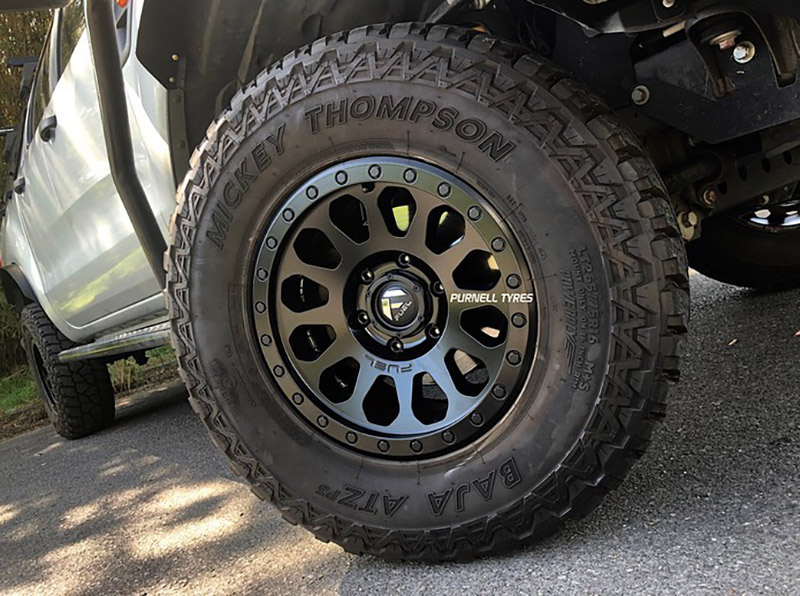Different 4×4 wheel designs impact your vehicle’s performance in several ways. The tread pattern plays an essential role in traction, with aggressive treads excelling in muddy conditions while moderate ones balance on-road comfort with off-road capability. Wheel size affects handling, with larger wheels offering better ground clearance and smaller ones enhancing agility. The material choice also matters; aluminum alloys are lightweight, while steel provides toughness for rough terrains. Wider wheels improve grip, while weight distribution impacts stability. This interplay of design elements can transform your driving experience, and there’s much more to uncover about optimizing your 4×4 setup.
Importance of Wheel Design
Wheel design plays an essential role in your vehicle’s overall performance and handling. When you choose wheels, you’re not just considering functionality; wheel aesthetics also come into play. The right design can elevate your vehicle’s appearance, making it stand out on the road. Fortunately, there is a wide variety of options available, including mag wheels in sizes to suit most 4X4 vehicles, ensuring both style and compatibility for your ride.
Over time, wheel design evolution has led to advancements that enhance both style and performance. Modern wheels are crafted to reduce weight while maintaining strength, improving fuel efficiency and handling.
Additionally, the right wheel can optimize traction and stability, vital for 4×4 vehicles tackling rough terrains. Understanding the importance of wheel design helps you make informed choices that balance aesthetics and functionality, ultimately enhancing your driving experience.
Types of Tread Patterns
Choosing the right tread pattern is essential for maximizing your 4×4’s performance on various terrains.
Different tread designs impact your vehicle’s off-road capability by affecting traction, handling, and overall stability. For instance, aggressive, deep treads excel in muddy or rocky conditions, while more moderate patterns are suitable for mixed-use, balancing on-road comfort and off-road performance.
Additionally, consider how tread wear affects your long-term driving experience; a well-chosen pattern can prolong the life of your tires and enhance your vehicle’s efficiency.
Wheel Size and Performance
Selecting the right size for your 4×4 wheels can greatly impact your vehicle’s handling, stability, and overall performance on different terrains.
The wheel diameter plays an essential role; larger wheels can improve off-road capability by providing better ground clearance and traction, but they may also affect your ride comfort and fuel efficiency. Conversely, smaller wheels can enhance agility and responsiveness, especially on tight trails.
Additionally, offset influence is critical in determining how your wheels align with the vehicle’s suspension. A positive offset can improve stability, while a negative offset may enhance traction in challenging conditions.
Ultimately, balancing wheel diameter and offset guarantees you get the best performance tailored to your driving needs. Choose wisely to maximize your 4×4’s potential!
Material Choices for Durability
The material you choose for your 4×4 wheels can greatly enhance their durability and performance in tough environments.
Aluminum alloys are popular for their lightweight properties, making them ideal for off-road conditions while still offering good strength.
On the other hand, steel construction provides exceptional toughness and resistance to damage, perfect for rocky terrains. However, keep in mind that steel wheels tend to be heavier, which can impact your vehicle’s handling.
Composite materials are also gaining traction, combining lightweight benefits with robust performance, although they may not be as cost-effective as aluminum or steel.
Ultimately, weigh the durability against weight considerations to find the best fit for your 4×4 needs.

Impact on Traction and Stability
Proper wheel design directly influences your 4×4’s traction and stability, essential for traversing challenging terrains.
When you choose the right wheel design, you’re enhancing your vehicle’s traction control, allowing better grip on slippery or uneven surfaces. Wider wheels often provide more surface area, improving traction, while specific tread patterns can optimize grip in mud or snow.
Additionally, the weight distribution of your wheels affects stability dynamics; lighter wheels can enhance responsiveness, while heavier options may provide more stability at high speeds. In both cases, the overall design must complement your vehicle’s suspension system to guarantee a smooth ride.
Choosing the Right Wheel Design
When it comes to choosing a wheel design for your 4×4, consider how different styles and materials can enhance your vehicle’s performance in various terrains.
First, think about the wheel weight; lighter wheels often improve acceleration and fuel efficiency, while heavier options provide better stability in rough conditions.
Next, evaluate your aesthetic preferences, as the design should reflect your personal style while still meeting performance needs.
For off-roading, opt for rugged designs that can withstand harsh environments, whereas sleek styles may suit urban driving.
Remember, the right wheel design balances performance and appearance, ensuring your 4×4 not only looks great but also handles well in the terrains you frequent.
Choose wisely to maximize your driving experience!








